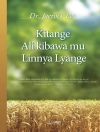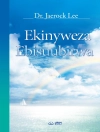John’s gospel does not record ‘Thomas’s doubt, ‘ as later generations of Christians have branded the story. Rather, John presents Thomas’s faith. In this work, Robert H. Smith approaches Thomas as one who believes in the reality of incarnation: God has a body.
Too often, Smith argues, Christians read John’s gospel for its lyrical discourses. The resulting portrait of Jesus is a ‘cross-less Christ, ‘ a portrait that contributes powerfully to Christian triumphalism. In contrast, Smith finds that the evangelist always has the cross in view. Smith reads John ‘backwards, ‘ through the eyes of Thomas. In so doing, he demonstrates the centrality of a wounded Lord in the theology of the gospel.
But this book does not end with hermeneutics. Smith advances his discussion into the life of discipleship. Anyone dwelling in Christ’s body will be similarly marked. What does it mean to live in the world as the marked body of Christ? Everyone who poses the question will want to read this book.
Martha E. Stortz
Professor of Historical Theology and Ethics
Pacific Lutheran Theological Seminary/The Graduate Theological Union
Berkeley, California
เกี่ยวกับผู้แต่ง
Robert H. Smith (1932-2006) served as Christ Seminary-Seminex Professor of New Testament at Pacific Lutheran Theological Seminary in Berkeley, California. Among his books are Apocalypse: A Commentary on Revelation in Words and Images and Easter Gospels: The Resurrection of Jesus according to the Four Evangelists as well as commentaries on Acts, Hebrews, and Matthew.







![ปกของ Brian Schrag & Julisa Rowe: Community Arts for God's Purposes [Chinese] 貼近神心意的社群藝術 ปกของ Brian Schrag & Julisa Rowe: Community Arts for God's Purposes [Chinese] 貼近神心意的社群藝術](https://static.worldofdigitals.com/thumb_webp/740/9781645083740.webp)




